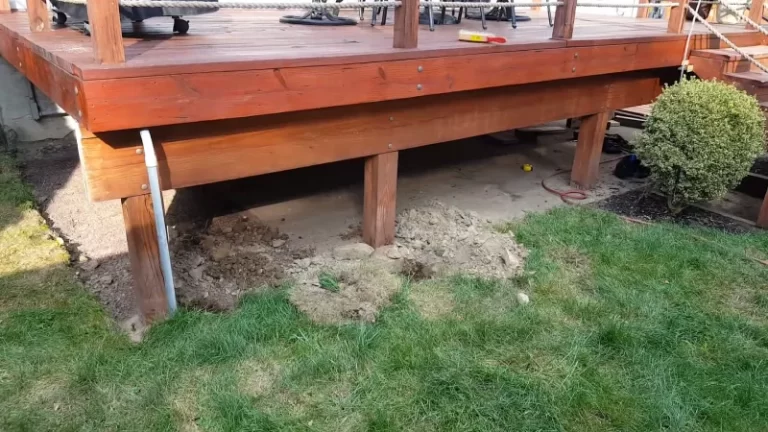What Size Nail for 1×4 Exterior Trim?

Nailing is a common method used to attach two or more pieces of material together. Nails are available in various sizes and types, and the appropriate size and type should be chosen based on the specific project and the materials being used.
In this article, we will discuss the factors to consider when choosing the size and type of nail for various applications, such as exterior trim, nailing 2×4 together and more. We will also provide some tips and recommendations for selecting the right nail for the job.
You'll Learn About
What Size Nail for 1×4 Exterior Trim?
When choosing the size of the nail for 1×4 exterior trim, several factors should be considered.
Nail Gun
The type of nail gun being used should be considered. If using a nail gun, a nail size that is compatible with the gun should be used.
Trim
The type of trim being installed should be considered. For exterior trim exposed to the elements, it is best to use a nail with a larger gauge, such as a 15 gauge nail, to ensure durability and longevity.
Material
The type of material being used for the trim should be considered. For instance, if using wood trim, it is best to use a nail that is specifically designed for wood, such as a ring shank nail.
Weather conditions
The types of weather conditions the trim will be exposed to should be considered. In areas with high winds or frequent storms, it is best to use a nail with a larger gauge and a strong head to ensure the trim stays securely in place.
Finish
The type of finish applied to the trim should be considered. If the trim will be painted, a galvanized nail should be used to prevent rusting and unsightly discoloration.
Personal Preference
Personal preference and experience should also be considered when choosing the size of the nail for 1×4 exterior trim. It is always best to consult with a professional or do some research to determine the best size of nail for the specific project at hand.
What Kind of Nails to Use on Outdoor Trim?
When choosing the type of nail for outdoor trim, several factors should be considered.
- Type of Nail Gun: If using a nail gun, the type of nail should be compatible with the gun. For example, if using an 18 gauge nailer, a nail size that fits the gun should be used.
- Type of Trim: The type of trim being installed should be considered. For instance, if using wood trim, it is best to use a nail that is specifically designed for wood, such as a ring shank nail.
- Weather Conditions: The type of weather conditions the trim will be exposed to should also be considered. In areas with high winds or frequent storms, it is best to use a nail with a larger gauge and a strong head to ensure the trim stays securely in place.
- Finish: The type of finish applied to the trim should also be considered. If the trim will be painted, a galvanized nail should be used to prevent rusting and unsightly discoloration. Hot-dipped galvanized nails are a suitable option for outdoor use due to their thicker zinc coating, but they may not be suitable for some wood species such as cedar and redwood.
Overall, it is important to carefully consider the specific project and factors such as the type of nail gun, type of trim, weather conditions, and finish when choosing the type of nail for outdoor trim. Consulting with a professional or conducting some research can also help ensure the right type of nail is used for the job.
What Size Nails are for Nailing 2×4 Together?
When choosing the size of nails for nailing 2×4 together, it is generally recommended to use 16d nails, also known as 16-penny nails. There are several reasons why this size is appropriate for nailing 2×4 together.
- Length: The length of the nail is important for ensuring a strong and secure connection. 16d nails are 3 ½ inches long, which is the perfect length for nailing 2×4 together. Shorter nails may not provide enough support, while longer nails may split the wood.
- Strength: 16d nails are strong enough to hold the 2×4 securely in place, while also being flexible enough to allow for some movement. This is important because 2x4s can expand and contract with changes in temperature and humidity.
- Compatibility: 16d nails are compatible with most nail guns, making them a convenient and easy-to-use option.
- Cost: 16d nails are widely available and relatively affordable, making them a cost-effective option for nailing 2×4 together.
In summary, 16d nails are the appropriate size for nailing 2×4 together due to their length, strength, compatibility with nail guns, and cost-effectiveness.
What Size Nails Do You Use for Framing?
When it comes to framing interior walls, the size of the nails used is important for ensuring a strong and durable connection. Nails that are too long or thick can be difficult to drive and may split the wood, while nails that are too short or thin may not provide enough support. The best size of nail for framing is 3 1/2 inches long, also known as 16d or “16-penny” nails. There are several reasons why this size is ideal for framing.
- Length: The length of the nail is important for ensuring a strong and secure connection. 16d nails are 3 1/2 inches long, which is the perfect length for framing. Shorter nails may not provide enough support, while longer nails may split the wood.
- Strength: 16d nails are strong enough to hold the framing securely in place, while also being flexible enough to allow for some movement. This is important because wood can expand and contract with changes in temperature and humidity.
- Compatibility: 16d nails are compatible with most nail guns, making them a convenient and easy-to-use option for framing.
- Cost: 16d nails are widely available and relatively affordable, making them a cost-effective option for framing.
In addition to the length, strength, compatibility, and cost-effectiveness of 16d nails, there are two main types of 16d nails available at hardware stores: common nails and sinkers. Common nails have a smooth head, while sinkers have a textured head that prevents hammers from slipping. Common nails have a diameter of 0.162 inches and are heftier, but the sleeker 0.148-inch sinkers are better for framing. Sinkers are also often coated with vinyl or epoxy, which helps them slide into the wood more easily, making them a convenient and efficient choice for framing.
In addition to 16d nails, smaller nails, such as 8d common nails, which are 2 1/2 inches long, are often used for subsidiary tasks in framing, such as attaching furring strips and sheathing.
Frequently Asked Questions
- Can I use a nail gun for the exterior trim?
Yes, you can use a nail gun for exterior trim. However, it is important to choose a nail size that is compatible with the nail gun and suitable for the specific project.
For exterior trim exposed to the elements, it is best to use a nail with a larger gauge, such as a 15 gauge nail, to ensure durability and longevity.
- What type of nail should I use for outdoor trim?
For outdoor trim, it is best to use a nail that is specifically designed for outdoor use, such as a hot-dipped galvanized nail. This type of nail has a thicker zinc coating that protects it from corrosion and other weather-related damage.
It is also important to choose a nail size that is compatible with the type of trim being used and the specific weather conditions it will be exposed to. Be careful about wires while using nail guns.
- Can I use regular nails for nailing 2×4 together?
Yes, you can use regular nails for nailing 2×4 together. However, it is important to choose a nail size that is appropriate for the specific project. Most contractors agree that 16d nails, also known as 16-penny nails, are the appropriate size for nailing 2×4 together.
This site is strong enough to hold the 2×4 securely in place, while also being flexible enough to allow for some movement.
- Is it necessary to caulk over nails used for exterior trim?
Caulking over nails used for exterior trim is not necessary, but it can provide added protection against water damage. If the trim will be exposed to the elements, it is a good idea to caulk over the nails to help seal out moisture.
However, if the trim will be protected from the elements, such as under a porch, caulking may not be necessary. It is always best to consult with a professional or do some research to determine the best approach for the specific project at hand.
Final Words
Choosing the right size and type of nail is important for ensuring a strong and durable connection. When selecting nails, it is important to consider factors such as the type of material being used, the type of finish applied, the weather conditions the nail will be exposed to, and the type of nail gun being used.
Consulting with a professional or doing some research can also help ensure the right type of nail is chosen for the specific project at hand. By carefully considering these factors, it is possible to choose the right nail for the job and achieve a successful and long-lasting result.




